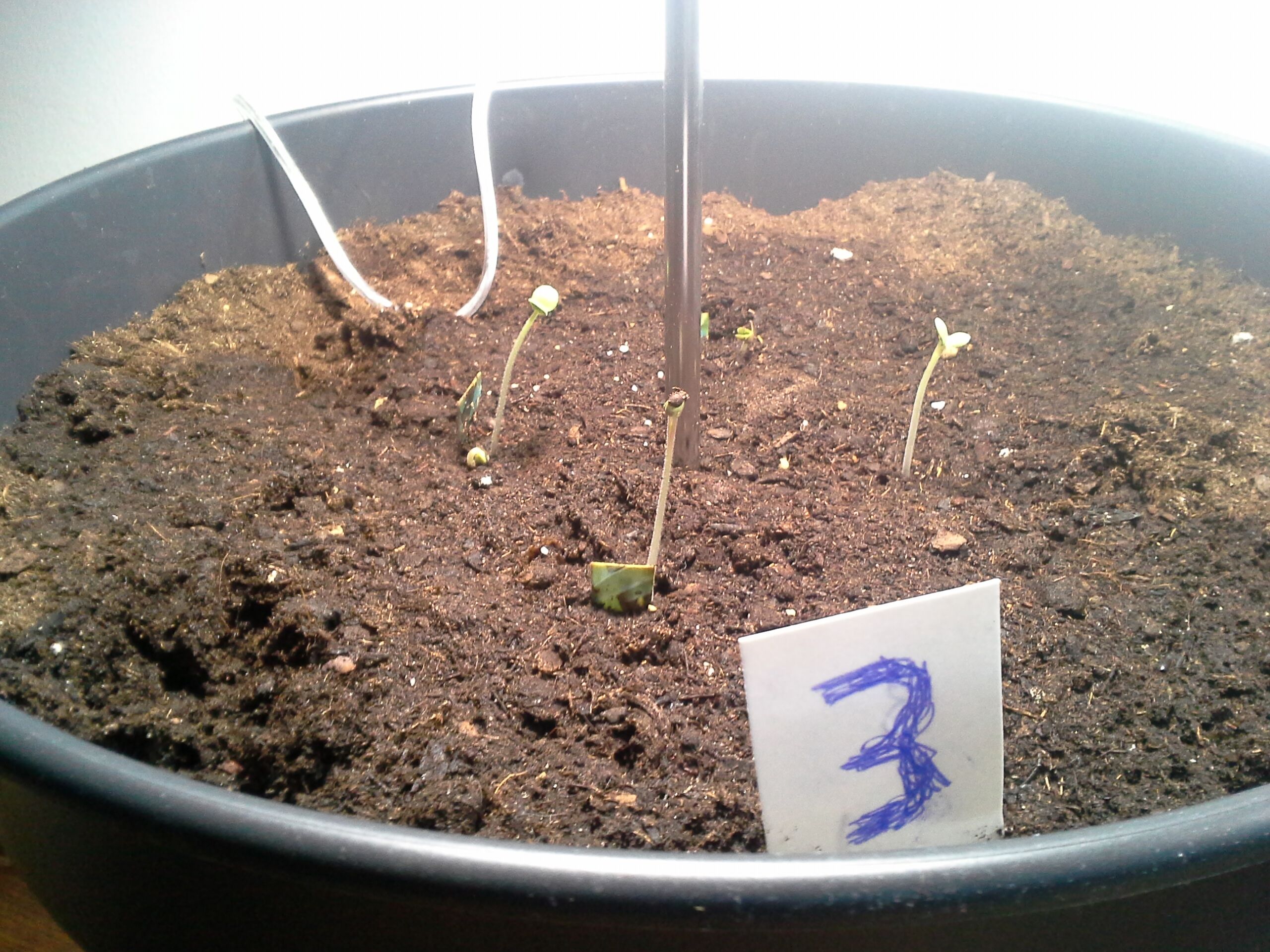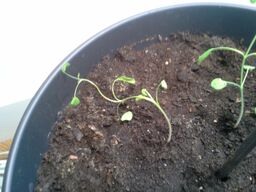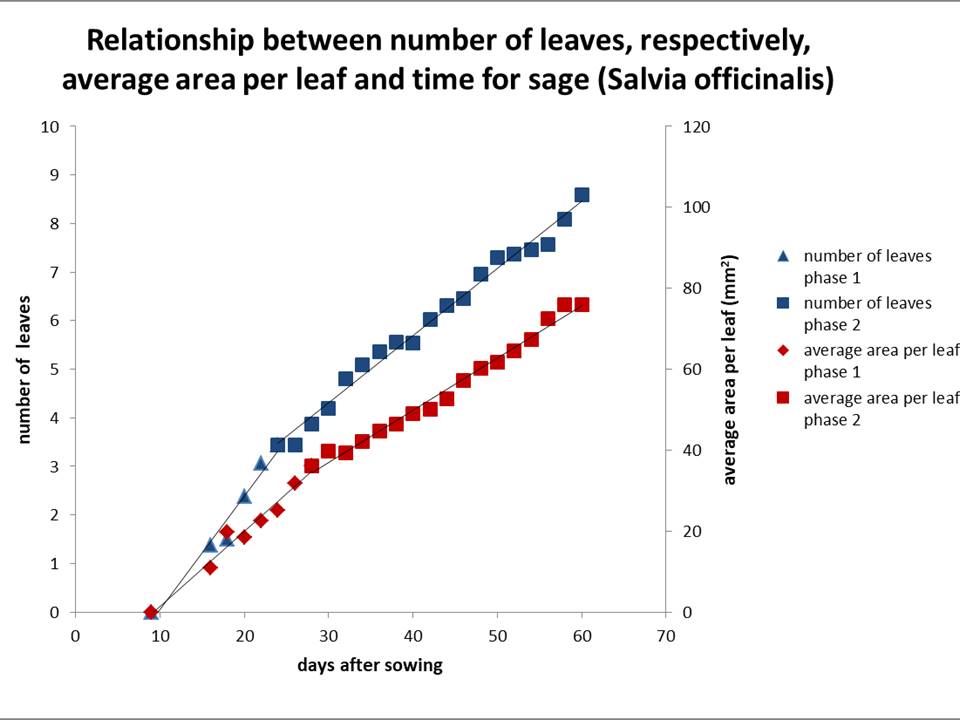Introduction
Earlier experiments (link1, link2) indicate that plants do not grow exponentially but according a second-order polynomial. New experimental data are necessary to confirm or to reject these conclusions.
We searched for a way to make it possible to allow everybody interested to do an experiment at home regarding this theme.
Methods
The experiment was in the winter. Heating was necessary. The advantage was that the thermostat kept the conditions more or less constant. During the day the temperature raised to 21 degree Celsius and during the night it dropped to 16. The windows of the room were on the north side. So, there was not sunlight coming in directly. ISUN Led Plant Light of PARUS Plant Light provided artificial light 12 hours per day. In this way we kept the incoming light also more or less constant. It is a prerequisite for the experiment.
We sowed seeds of sage in 4 pots of 28 cm high, with 30 cm of diameter at the top and 20 cm at the bottom. We used regular potting soil.
Seeds were put 0,5 cm under the soil: 4 seeds were put on each corner of an imaginary square. The corners were almost as far from the edge of the pot as from each other. The first to emerge on each corner was kept, the others were removed if they emerged. In this way each plant could avoid competition as long as possible.

Water was provided every 4 days to keep the soil moist. After 30 days fertilizer was provided by 250 ml water per pot with Pokon (concentration was one cap per litre). We wanted deliberately not to be too exact about it in this home experiment. It had to test also if the plant would keep its growth pattern overall under conditions which would differ a little. After the first sample we proceeded with measuring every two days.
Sampling included counting of leaves and measurement of length and width of the leaves (we stopped determining the length and width, if they did not increase in four consecutive measurements). Leaf area was estimated by the multiplying of length with width of the leaves and a factor 0,67. The latter was determined by putting some leaves on graph paper and counting the squares covered by the leaves. The result was divided by the product of the length and width of the leaves giving the factor.
Results
It was clear, as maybe each professional breeder of sage would have argued in advance, that the conditions were bad for the growth of sage: Too low both the temperature and the light intensity. Most plants were showing wrinkled growth in the end, see the following picture.

We changed after 64 days, when two of the four pots didn’t have any plants left, from 2-days sampling to 5-7 days sampling. From the 16 plants only 7 plants were left. We suspected too little plants for any clear results. After 90 days even these plants were wrinkled.
There was also considerably variation between the pots and within the pots.
But, when we used the averages of the results of the non-wrinkled plants up to 60 days , we could still make interesting conclusions. To our surprise, even under these very suboptimal conditions they supported the second order polynomial growth, as composed of two linear components: number of leaves and average surface per leaf. See the figure below. There were again two phases, as was stated earlier in (link1): In the first phase the energy is coming mainly from the seed and in the second only from photosynthesis. The conditions were so bad that growth by photosynthesis was slower then by the mobilization of energy in the seed, see the figure.
After 60 days the lines went oscillating. As suspected, 7 plants in only 2 pots were not enough.

It is almost if the plants wrinkle on the moment that they can’t achieve second order polynomial growth!
But, of course, we need more experiments with optimal growth conditions.